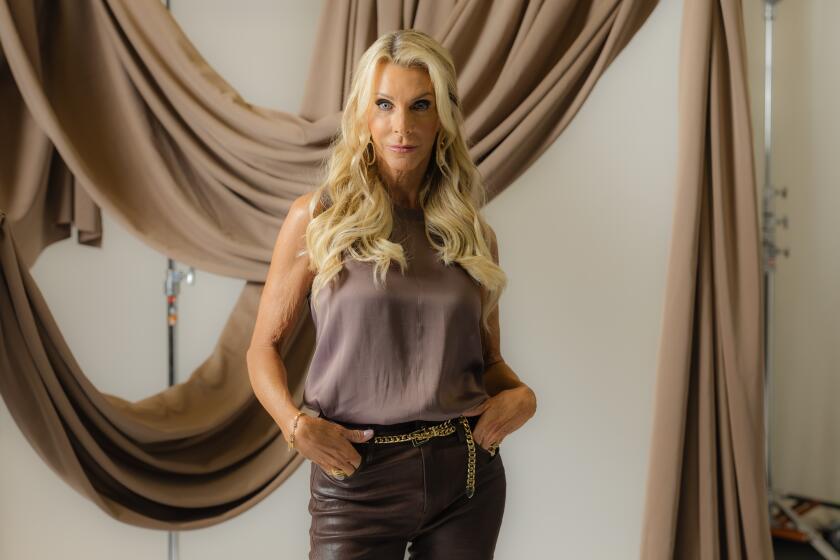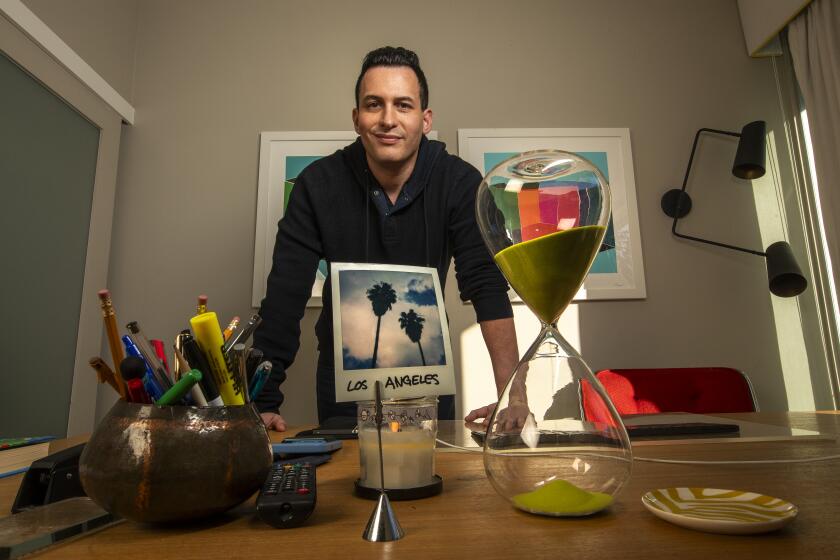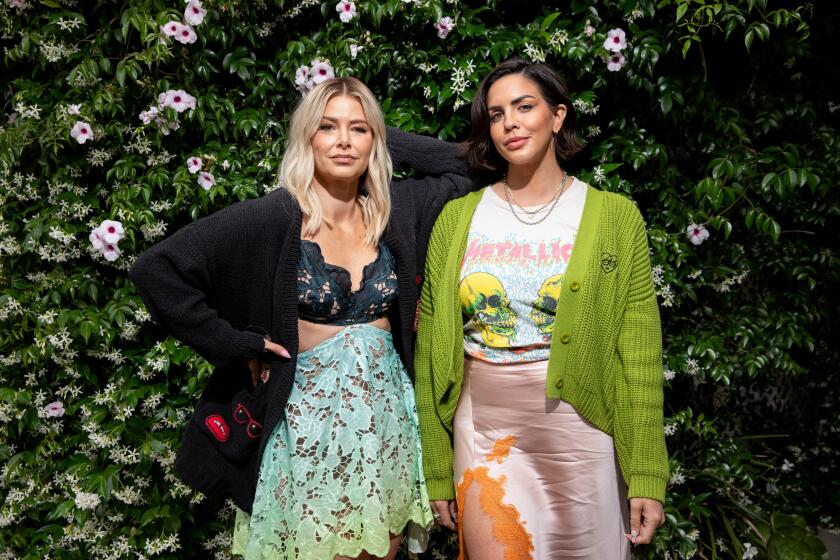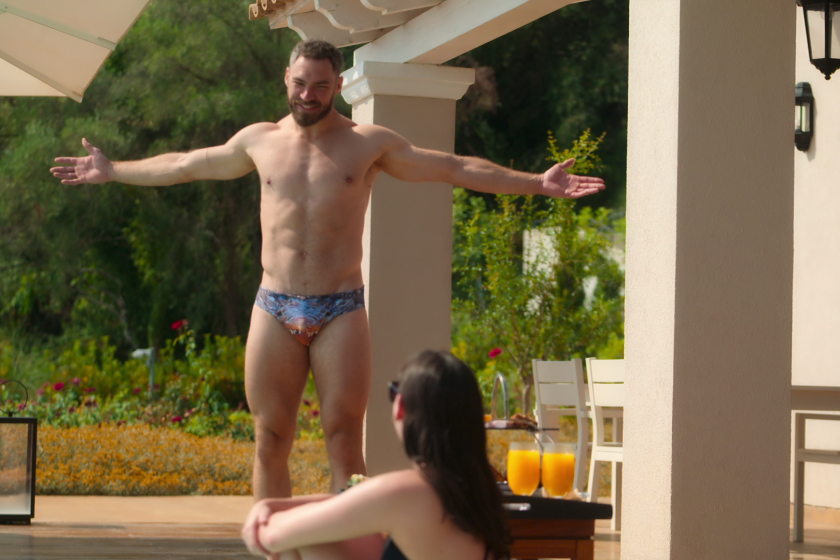
- Share via
In February 2020 — a day before Valentine’s Day, and mere weeks before the world shut down because of the COVID-19 pandemic — a new reality dating show with a kooky hook called “Love Is Blind” premiered on Netflix. The series, hosted by husband-wife duo Nick and Vanessa Lachey, followed a group of singles as they went on “dates” with prospective partners sight unseen in a windowless room, separated by a shimmering blue wall, in the hopes of getting engaged in just 10 days.
It pierced the zeitgeist quicker than one of Cupid’s arrows.
Four years later, “Love Is Blind” has become one of Netflix’s hit series, now in its seventh season, that has resulted in nine marriages, two divorces, several babies and countless viral moments. It has also spawned international versions set in Mexico, Brazil, the United Kingdom, Sweden and Japan. “Love Is Blind: Habibi,” featuring Arab singles, premiered last week. By year’s end, there will be close to a dozen versions of the show. If that’s not enough, there’s also the competition series “Perfect Match,” featuring cast members from “Love Is Blind” and other Netflix dating shows.
“It’s hard to find formats that you know will travel well and that can be adapted internationally,” said Brandon Riegg, who oversees nonfiction series and sports at Netflix. “When those formats come along, you go, let’s basically squeeze as much juice from it as we can.”
The aggressive expansion of the hit dating show offers a prime example of how franchises, not unlike the Marvel Cinematic Universe and “Law & Order,” have conquered reality television. Producers are increasingly leaning on established reality formats rather than gambling on new concepts because they’re proven successes. It’s also a signal of how reality TV, long treated like the redheaded stepchild of showbiz, increasingly rivals its scripted counterparts in terms of financial value and commercial appeal.
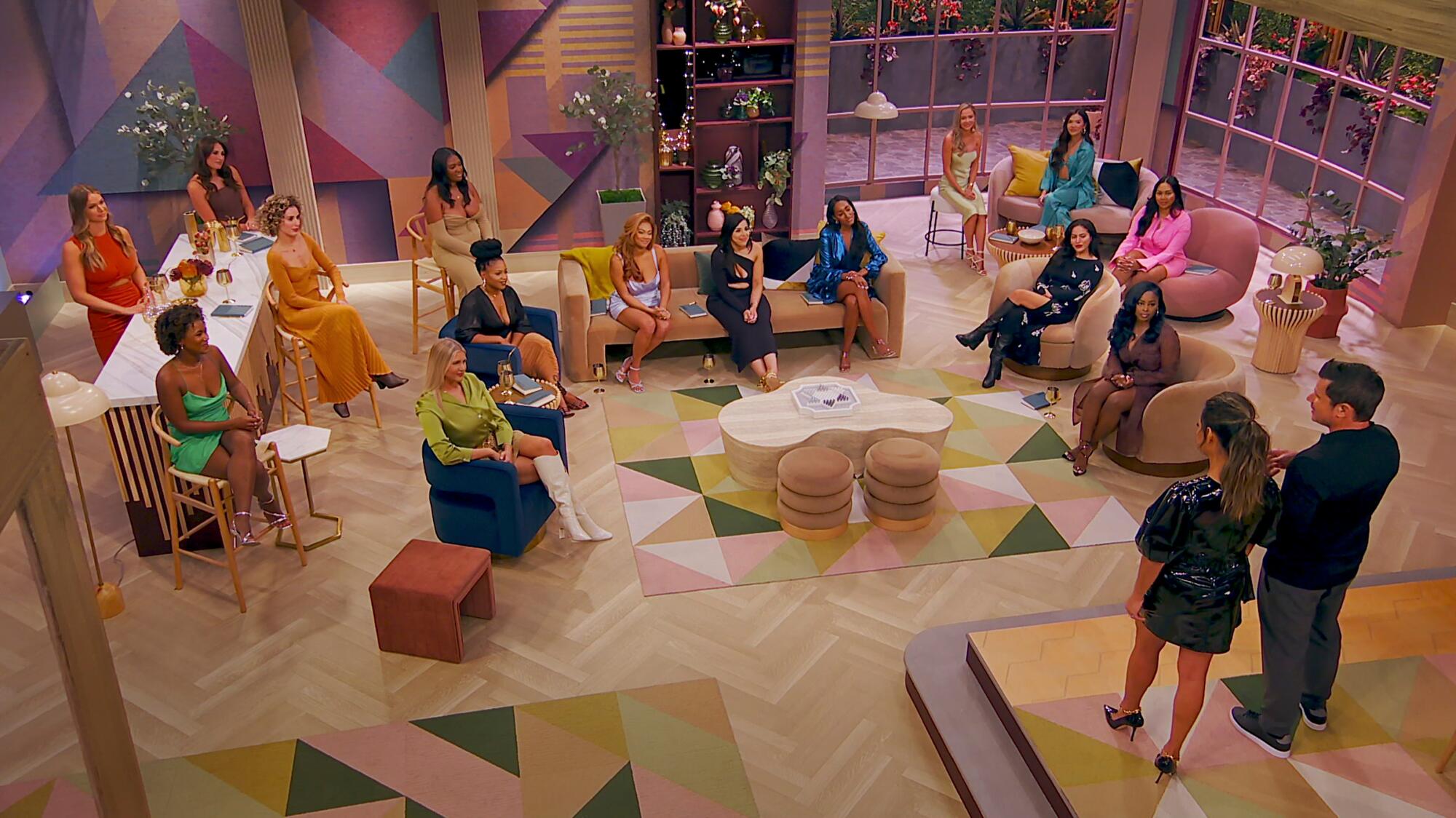
But as a risk-averse industry relies more and more on safe, conventional choices in a genre built on provocation and experimentation, reality’s franchise explosion raises questions about the long-term viability of the business. What will serve as the proving ground for new unscripted concepts if only known entities get a real shot at success?
A simple justification for this strategy is fan service. The voyeuristic nature of reality TV allows viewers to form deep and intimate relationships with the people they’re watching on screen, who become heroes and villains every bit as compelling as Voldemort or Iron Man.
According to Julie Pizzi, the president of Bunim/Murray Productions and its sister company 51 Minds, which produce franchises like MTV’s “The Challenge” and Bravo’s “Below Deck,” that familiarity drives viewership and, in turn, ideas for spinoffs, even if the lion’s share of the development roster at both companies favors brand-new concepts.
“It’s easier for audiences to invest in something they already know they like than a brand-new show,” she said. “Every single network executive’s job is to get hits on the air and to get good ratings. There’s always a desire to bring familiar titles that people will see and be like, ‘Oh, I want to watch that. I know that show.’”

How much can it expand?
TLC’s “90 Day Fiancé,” which premiered in 2014, is one of the most striking examples of the potential breadth and scale of a single reality TV concept. The show follows couples — often mismatched pairings that seem doomed from the outset — as they navigate the K1 visa process, which allows foreigners who are engaged to American citizens to travel to the United States and spend 90 days in the country before marrying or, sometimes, splitting up.
“I was a huge believer in the concept,” said executive producer Matt Sharp, founder of Sharp Entertainment, the production company that makes the show for TLC. “Love is something very primal to all of us, and it’s extremely relatable.” The first season was just six episodes long, but Sharp believed the phenomenon could be explored from different perspectives.
“There were so many other fresh hooks that were underserved in the show,” he said. “That’s how we started franchising out.”
Now, after 10 years, 86 marriages and 61 children, the “90 Day” universe has expanded to roughly two dozen spinoffs featuring couples at every stage of the immigration process, including “90 Day Fiancé: The Other Way,” “90 Day Fiancé: Happily Ever After?,” and “Before the 90 Days.”

In an era of declining cable ratings, ”90 Day” programming remains a huge draw, particularly for female viewers in the 25-54 age demographic. More than 1,500 hours of “90 Day” content is available to stream on Max and Discovery+, making it the TV equivalent of snacks bought by the truckload from Costco. According to TLC, the franchise has been viewed for 7.2 billion hours across all platforms since it debuted — nearly an hour for every person on the planet.
The highly addictive “90 Day Fiancé” was hardly the first reality show to explode into a full-blown pop culture ecosystem.
MTV wasted little time building “Real World,” a series that documented a group of young people living together, and “Road Rules,” a competition series, into franchises in the ‘90s — even launching a crossover competition series, “The Real World/Road Rules Challenge,” which has since been rebranded “The Challenge” and is currently airing its 40th season.
“The Bachelor,” which debuted in 2002 on ABC, begat “The Bachelorette” the following year. The universe now includes “Bachelor in Paradise,” “The Golden Bachelor” and, most recently,“The Golden Bachelorette.”
Despite the Golden Bachelor’s failed marriage and other controversy, the latest ‘Bachelor’ spinoff hopes to strike ratings gold, this time with a 61-year-old grandmother.
“What ‘The Bachelor’ did first and extremely well was turn the show into an ongoing soap opera,” said Andy Dehnart, founder and editor of the website Reality Blurred. “People having successful relationships is not the point of that show; it’s to generate drama and tabloid headlines and keep the franchise going, so that universe keeps feeding itself.”
During the aughts, VH1’s lineup was dominated by interconnected “celebreality” shows about C-list stars, like “The Surreal Life,” “Flavor of Love” and “My Fair Brady.” “The idea was less about franchising and more about understanding that there was this new genre of person, the reality star, which hadn’t really existed before,” said Michael Hirschorn, former head of programming at VH1, “How can we come up with new formats and vehicles to keep those people on TV and satisfy the public, which just wanted to see more of them?”

Maintaining a franchise
In the contemporary television landscape, no entity has mastered the art of the franchise quite like Bravo.
Over nearly two decades, the cable network has built an empire by identifying formats and personalities that make for irresistible viewing. In the process, it has bred an army of superfans who have invested untold hours in the drama they stir up. As a reward, the network feeds them more of the TV they love. This fall, Bravo’s programming roster includes “Below Deck Mediterranean,” “Below Deck Sailing Yacht” and “Real Housewives” series set in Dubai; Salt Lake City; Orange County; Potomac, Md.; and New York.
“The Real Housewives of Orange County,” which premiered in 2006 and centered on a group of women living in an affluent gated community, was the genesis. The first season consisted of only seven episodes, but Lauren Zalaznick, who oversaw Bravo as executive vice president at NBCUniversal, sensed the idea had growth potential. She asked her team to cast in two more cities with the idea of creating a “traveling road show.” As the franchise expanded to New York, Atlanta and beyond, it became clear that each city could sustain its own serialized docu-soap. Zalaznick was inspired by scripted soap operas with distinct settings, like “All My Children” and “Dynasty,” which were often denigrated but appealed to women. “We explicitly thought about how undervalued those shows actually were in the television landscape,” said Zalaznick, also founder and editor of the LZ Sunday Paper newsletter.
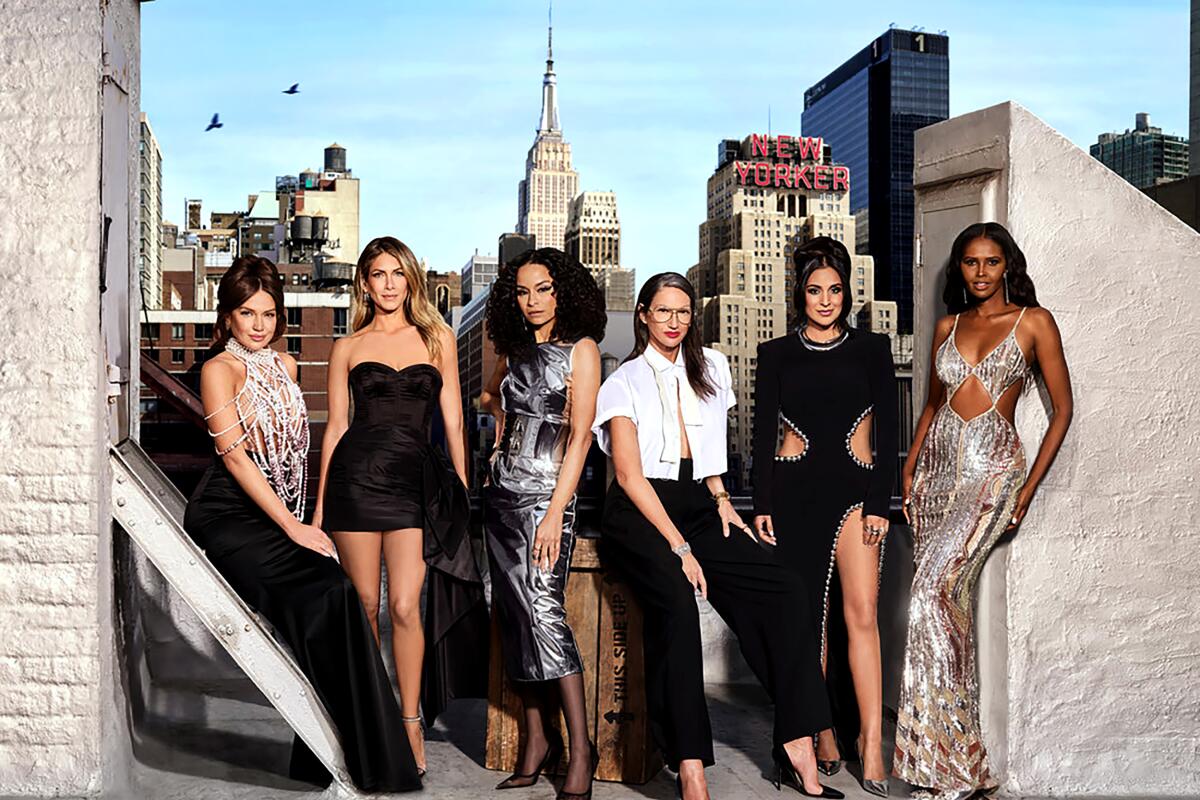
“The Real Housewives of New York City” was revamped in 2022 with a new cast featuring Brynn Whitfield, left, Erin Lichy, Sai De Silva, Jenna Lyons, Jessel Taank and Ubah Hassan. (Gavin Bond / Bravo)
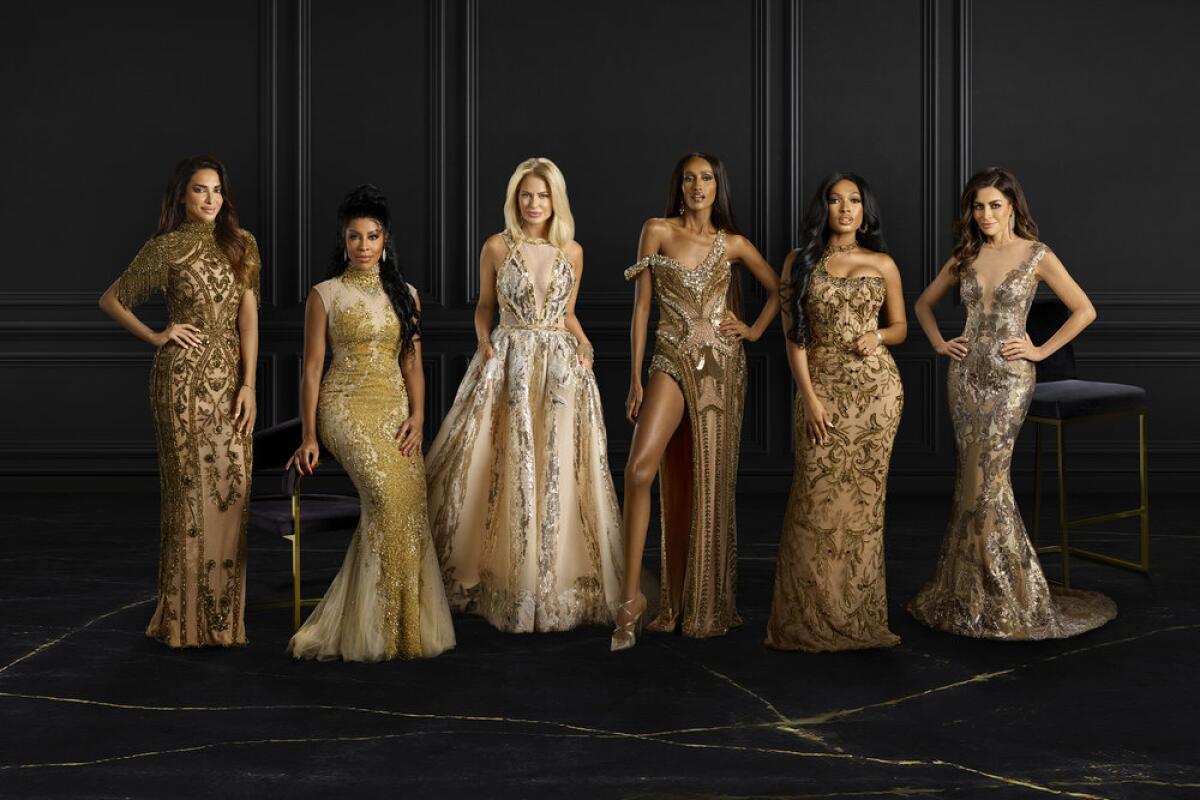
“Housewives” has also gone international with a series set in Dubai. Season 1 cast members included Sara Al Medani, left, Caroline Brooks, Caroline Stanbury, Chanel Ayan, Lesa Milan and Nina Ali. (Chris Haston/Bravo)
“The Real Housewives” franchise remains the cable network’s crown jewel. It currently has versions in 10 cities around the globe and has produced another universe within its galaxy, the spinoff series “Vanderpump Rules,” which then led to its own spinoff, “The Valley.” It also brought about an “Avengers”-like crossover series, “Ultimate Girls Trip,” which is among the flagship series of Peacock, NBCUniversal’s streaming service.
According to Alex Baskin, an executive producer of “The Real Housewives of Beverly Hills” and “The Real Housewives of Orange County,” it’s imperative that expansion doesn’t “end up hurting the mothership.”
Alex Baskin, the executive producer of Bravo’s “Vanderpump Rules,” looks back at Season 10 and “Scandoval,” and discusses what fans can expect for Season 11, premiering on Tuesday.
“There can be an overzealousness now just to try to do the same thing over and over again,” he said. One potential outcome is the creation and eventual cancellation of such spinoffs as “The Real Housewives of D.C.,” “Below Deck Adventure” and “Southern Charm New Orleans.”
It can also mean recognizing when a long-running series has become too predictable and stagnant. “The Real Housewives of New York City” was revamped in 2022 with a completely new cast, following negative responses to the show’s handling of race, and increasingly toxic dynamics between the women.
Following a sluggish stretch, “Vanderpump Rules” — a spinoff of “The Real Housewives of Beverly Hills” that initially followed the waitstaff of a restaurant owned by cast member Lisa Vanderpump — experienced a renaissance after its 10th season when a cheating scandal rocked the group and made national headlines. Suddenly, the series was riding high again and became fertile ground for a spinoff.

“The Valley” features former “Vanderpump Rules” cast members Jax Taylor, Brittany Cartwright and Kristen Doute, as well as cast members unaffiliated with that show, as they navigate a different stage of their lives in the suburbs. Much like “Vanderpump Rules” was introduced to viewers in a special episode of “The Real Housewives of Beverly Hills,” “The Valley” was introduced in a special episode of “Vanderpump Rules.” Baskin, who is an executive producer on both series, said that without the “Vanderpump” ties, he isn’t sure it would have found an audience.
The stars of the hit Bravo series open up about #Scandoval, a ‘very angry’ reunion and whether Tom and Raquel are really broken up.
“You have to be clever in packaging. Part of pitching a show these days is creating undeniability,” he said. “And it isn’t enough to have a great idea. Not only did ‘The Valley’ have the ‘Vanderpump Rules’ connection, you had ‘Vanderpump Rules’ exploding. There was this moment where this all came together, and it made perfect sense.”
When Sharp and his team are developing “90 Day” spinoffs, they follow what he calls “a rule of 10%.” “If the original show is true north, you need to be 10% to the left or the right — no more than that — for a spinoff, or it becomes unrecognizable to the audience,” he said. “It needs to feel and taste and smell like the original, but at the same time it needs to open up these areas that were potentially underserved in the first show.”

Taking it abroad
In the streaming era, as entertainment companies look for subscribers across the globe, franchising has taken on increasingly international dimensions.
When Riegg arrived at Netflix, he told chief executive Ted Sarandos and chief content officer Bela Bajaria that his idea of hitting a home run would be “find[ing] formats that we can have in all the countries that Netflix is in.” His goal was for the streamer to have its own version of “America’s Got Talent” or “Dancing with the Stars,” he said, citing two popular reality formats that have been reproduced in regions around the world.
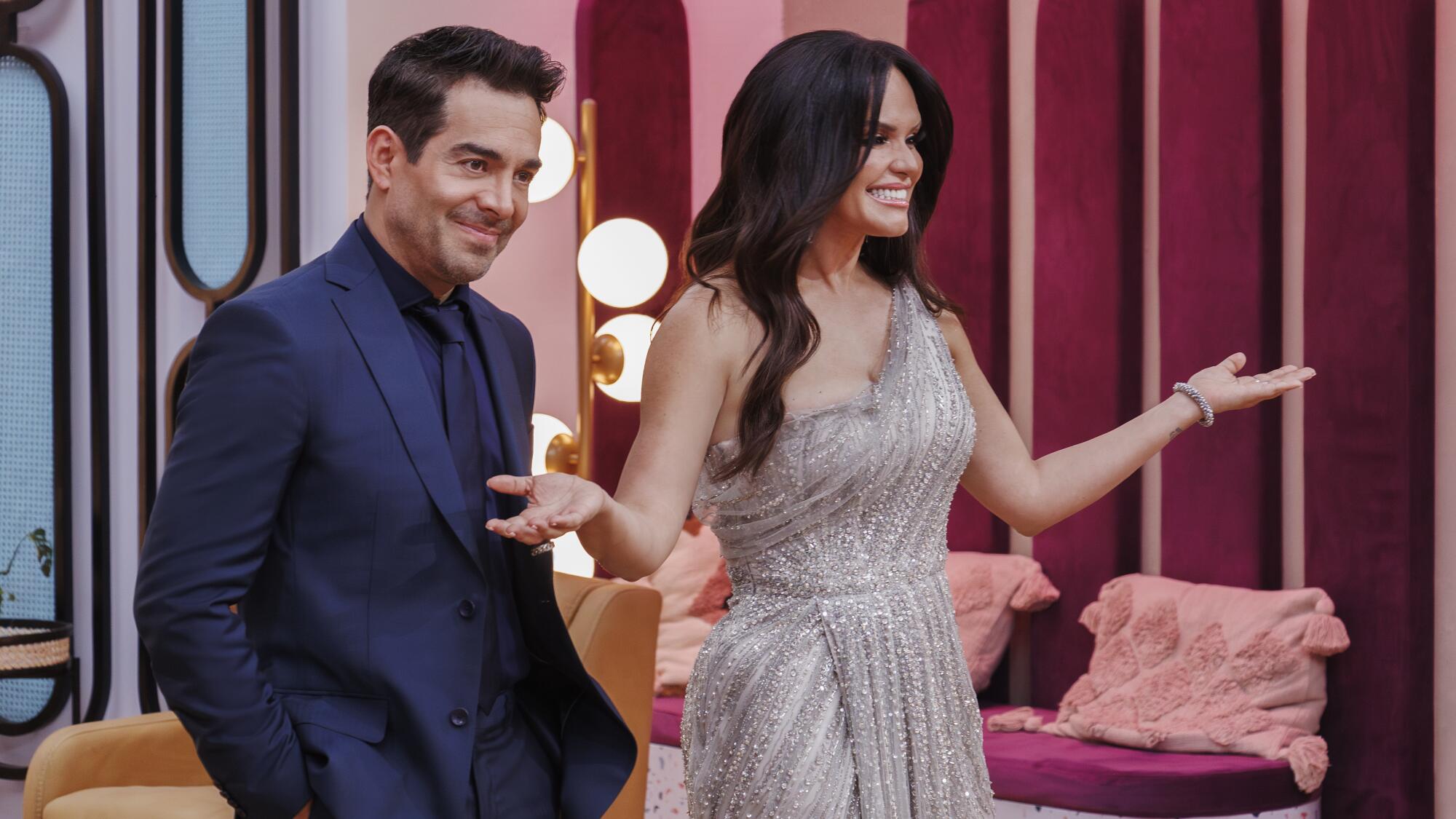
“Love Is Blind” has become the test case for this idea. Viewers outside the U.S. can watch the American original or, increasingly, a version starring people from their own country, produced with local customs in mind. Re-creating a hit format in different countries is nothing new; “Survivor” was adapted from a Swedish TV program, after all. But now numerous international versions of a show are available on a single global platform, accessible to millions of subscribers.
With a range of accents, more mature contestants and plenty of flirty banter, the latest international spin-off of Netflix’s dating show is also a return to form.
“You’re going to reach more of the people in Brazil or Italy or Germany when you have Brazilians, Italians and Germans on screen for that audience,” Riegg said. “So you’re capitalizing on a great idea, but you’re also making it more accessible to a much bigger audience when you franchise it.” But it’s also true that there is significant international cross-viewership: both the British and Mexican versions of “Love Is Blind” landed in the Netflix top 10 globally for TV series in August. For viewers who feel the original “Love Is Blind” has lost some of its magic, international versions offer a fresh alternative.

Downsides to franchising
“Love Is Blind” is one of the more recent reality formats to become a true pop culture phenomenon. After the boom of the aughts, the industry struggled to launch successful new shows. Most of the reality franchises currently on the air, from “Below Deck” to “The Bachelor,” are more than a decade old. Few new shows have broken through the clutter. MTV, once a pioneer of reality TV, is seemingly stuck in 2009 with spinoffs of “Jersey Shore” and “Teen Mom.”
Peacock’s Emmy-winning reality competition series “The Traitors” is another rare sensation that works because it takes a new idea but is cast with recognizable reality stars. Set in a castle in the Scottish Highlands and based on a Dutch format, the murder mystery game features contestants working together through a series of challenges while trying to identify the hidden traitors throughout the show.
In its first season in the U.S., half of the show’s 20 contestants were newcomers and the other half were reality stars from shows like “The Bachelor,” “Big Brother” and “The Real Housewives of Beverly Hills.” By the second season, the whole cast was reality stars. Now, the U.K. version of “The Traitors” is planning an all-celebrity edition for its forthcoming fourth season.
That NBCUniversal is now considering a “civilian”-centered spinoff of “The Traitors” as if it were a novelty — starring the regular Joes and Joans who made pioneering shows like “Survivor” and “Big Brother” turn-of-the-millennium hits — demonstrates how far the genre has come from broadcast curiosity to Hollywood mainstay.
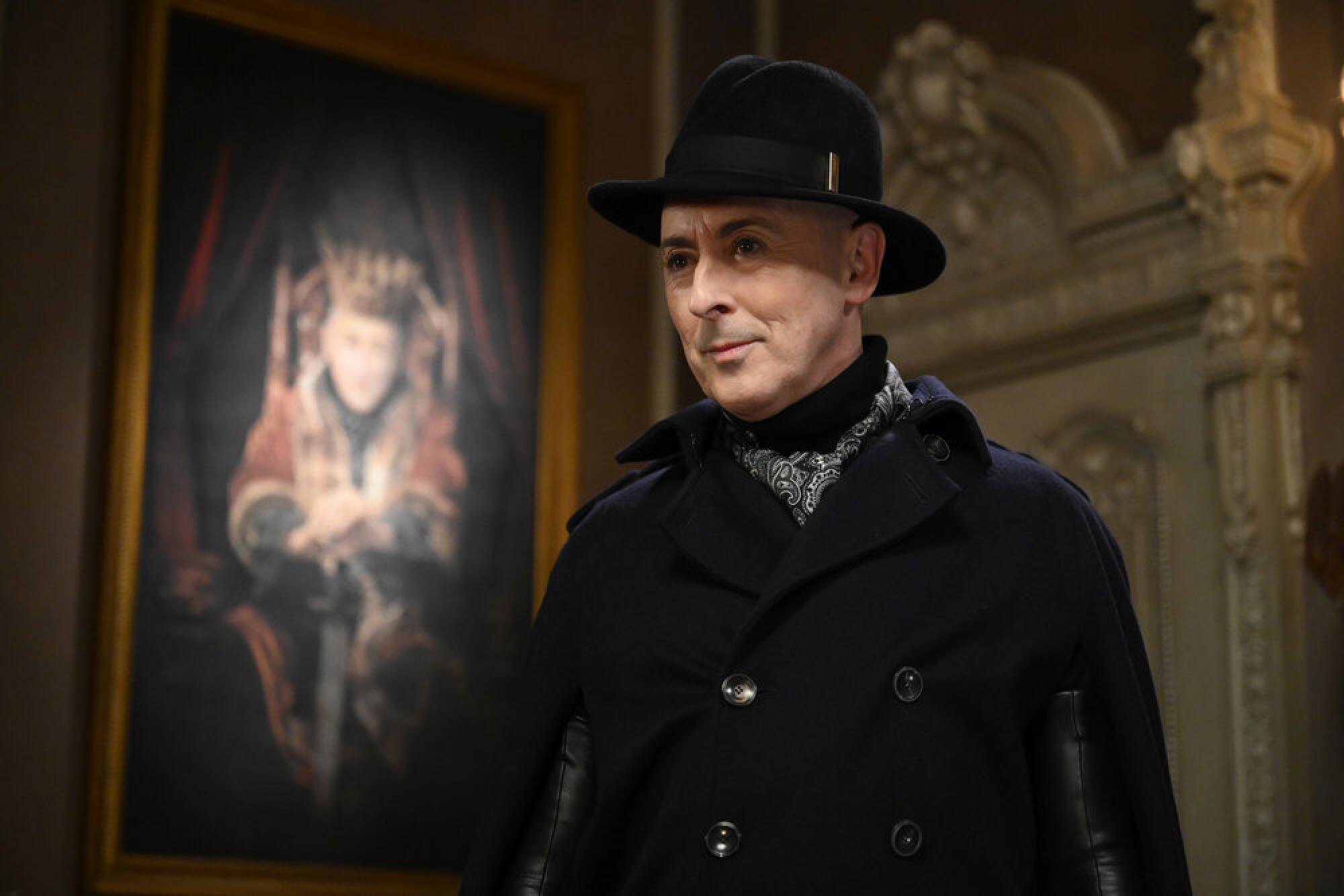
“For us, having established the celebrity version, most of the rest of the world is doing civilians,” said Corie Henson, who oversees unscripted content, competition and game shows at NBCUniversal. “So we’re like, ‘What does a civilian version look like for us? Does the celebrity version stay vibrant on Peacock, but maybe we do a civilian version on one of the other platforms, and then they coexist and they feed off each other?”
Zalaznick said she’s a “little shocked at the lack of new IP” in reality TV over the last decade. Though she thinks some of the current contraction in the industry is necessary after the streaming wars prompted over-expansion, what’s not healthy is that far fewer moderately budgeted, short-run new series are being commissioned — or being given time to hook viewers. (Depending on the show and its production, the cost of a reality TV series can range from about $100,000 to more than $3 million per episode, which is still less than many scripted shows.)
As reality TV takes a hit amid a slowdown in Hollywood production, crew members lament the loss of jobs to “runaway production,” cutbacks and consolidation.
“The Real Housewives of Orange County,” which was not an instant success but played in countless reruns until it found an audience, is one example. That’s how “we developed megahits and franchises and created billions of dollars of value for the shareholders,” she said.
Reality TV originally took off because producers were willing to take risks — and even occasionally offend public sensibility — but the present-day focus on franchises leaves less room for innovation that brought us daring shows like “Survivor.”
Even though it “makes sense to double down on what you know,” according to Dehnart, particularly in a period of industry-wide contraction, it can be self-defeating. “For someone like me, who’s watched every ‘Below Deck,’ you start to notice that they can’t cast anyone who knows how to do their jobs anymore,” he said. “It’s getting predictable. When you don’t take chances on something new, you really send your audience elsewhere to find something new, and maybe that’s TikTok.”
Hirschorn, founder of an unscripted production company called Ish Entertainment, said that in the long term, relying on franchises may be bad for business. “Ultimately your viewers age out of the demo and newer viewers aren’t coming in,” he said. At VH1, Hirschorn used to look for shows with what was referred to as a “WTF factor.”
“Will it trigger that response in a viewer? There’s very little that does that now, “ he said. “The innovation, the willingness to take chances and offend has moved away from reality television. You start to lose the point of why it existed in the first place.”
More to Read
Sign up for This Evening's Big Stories
Catch up on the day with the 7 biggest L.A. Times stories in your inbox every weekday evening.
You may occasionally receive promotional content from the Los Angeles Times.

